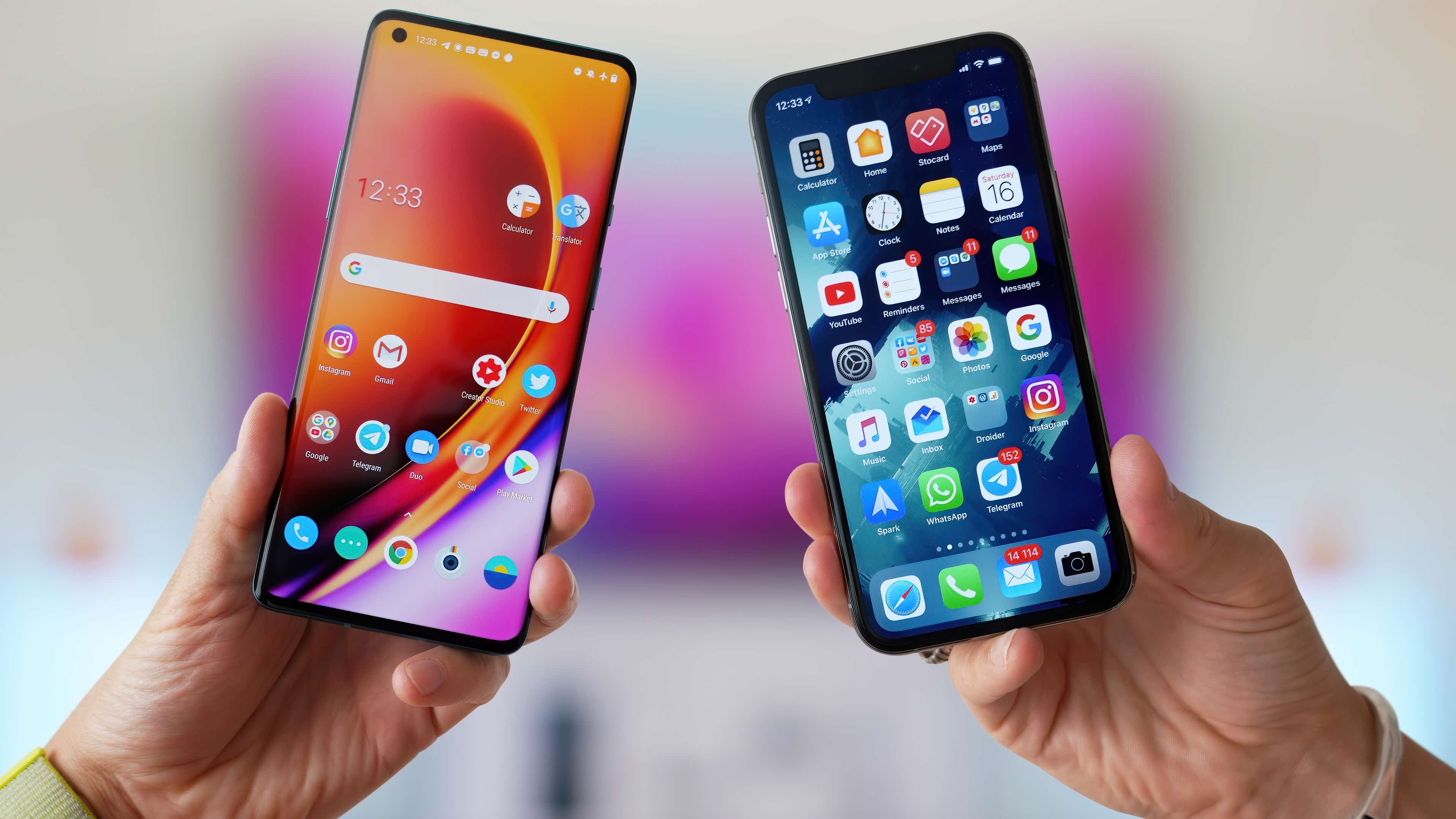- Uswitch.com>
- Mobiles>
- Guides>
- What is an Android mobile phone? - Uswitch
What is an Android mobile phone?
An Android phone is a powerful, high-tech smartphone that runs on the Android operating system (OS) developed by Google and is used by a variety of mobile phone manufacturers.
Surprisingly, Android phones make up over 70% of all phones bought across the world, while Apple's iOS-powered iPhones only account for 27%. The UK and US has a much larger share of iPhones than most other countries, but Android phones are still roughly as popular over here too.
Pick an Android mobile phone and you can choose from hundreds of great applications and multitask with ease. You’ll also get regular software updates that add great new features to your smartphone.
Find out more about the Android operating system with our guide.
Which handsets run Android?
The Android operating system is developed and owned by Google. However, it's not exclusive to the Google Pixel range of phones.
In fact, Android powers a host of handsets from some of the biggest mobile manufacturers.
These include Samsung, OnePlus, Sony, Nokia and OPPO, many of whom have enjoyed tremendous critical and commercial success with mobile phones running the Android operating system.
Who makes the best Android phones and tablet phones?
To a certain extent, this is largely a matter of opinion.
However, it is definitely worth noting that both Samsung and Google Pixel phones have been very favourably reviewed and have sold millions of units worldwide.
Compare Samsung phones and Google Pixel deals with Uswitch today.
Android mobile phone prices
Android phones range from state-of-the-art models to cheaper handsets.
Google and Samsung, for instance, have created superb Android phones for the top of the market, as well as mobiles running Android for those who want to spend a bit less.
Prices for the top-end models are usually between £600-1,200 if you buy one outright. For that reason, many people prefer to get one on a contract deal and spread the cost over up to two years.
Monthly contract prices for these high-end models range from £35-£50 per month.
Mid-range Android phones can be had from around £300 outright or between £15-£25, while the cheapest, entry-level Android phones are £100 or so. Opt for a contract and expect to pay £10 or so per month.
Compare Contract phone deals at Uswitch now.
Budget Android phones vs high-end Android mobiles
Pick a cheaper Android phone and you’ll still get a choice of thousands of apps and a great communication tool with excellent social networking options.
The main difference between cheaper Android phones and the most expensive models is that the former will typically feature lower-grade cameras and lower-resolution screens.
Less costly Android mobiles will also typically have less powerful processors. This means they may not run as fast or as smoothly and may be left out of the latest software updates because they're not powerful enough to run them.
Google Pixel Android phones
As well as Android mobile phones from Samsung, Sony and OnePlus, Google has brought phones to market that feature its own branding. This is the well-regarded Pixel range.
The main difference between Google Pixel and those made by third-party companies is that Google-branded phones run its own operating system.
This means the user interface they use is almost completely unaltered from Google’s original design and that they do not feature the customisations that the likes of Samsung use to put their own stamp on their Android phones.
As a result, Pixel users have experienced fewer problems that have sometimes affected owners of other phone manufacturers’ handsets – such as hogging more memory and battery life - and have been able to get Android updates for their mobiles as soon as Google has made them available.
This has made them especially popular with committed tech fans, who are keen to get the latest, greatest version of Android on their handset as soon as possible.
Compare Google phones here.
Android mobile apps
The sheer range of Android apps available is a key selling point of Android mobiles.
Head to the Google Play Store, Google’s official applications download store. From there, you’ll be able to choose from a vast array of applications, taking in everything from practical business tools to fun games.
Best of all, many of these apps are totally free to download.
All Android phones also come with Google apps preinstalled, such as YouTube, Google Maps and Gmail, so you’ll have great some apps to get to grips with.
Google frequently updates these apps for free, making them easier and better to use each time.
Android updates explained
Periodically, Google releases an upgraded version of the Android software.
They used to be referred to by fun, dessert or other baked goods-themed codenames, such as FroYo (Frozen Yoghurt), Gingerbread, Oreo, Pie or even Ice Cream Sandwich, but recently they've gone back to plain numbers with Android 10 and Android 11.
Each time you get an update you can look forward to a host of new features for your handset. An Android update can also make your phone faster to use and fixes glitches and issues that have been discovered.
Getting an Android update
You will usually be notified on your phone when a new update is available.
Once you're happy to allow a bit of time for your phone to update, you can go to the Play Store to start it. The update will then begin downloading directly to your phone.
It’s a good idea to use your Wi-Fi connection while updating because it can use up a considerable amount of data.
Also, because an update is a fairly large file, it'll take much longer to download over a 4G mobile broadband connection. So if you don't fancy being without access to your phone for 10-15 minutes while you're out, it's best to wait until you get home.
It’s also prudent to back up any information on your phone, either to your Cloud storage or a microSD card before performing the update, so that you retain all your contacts and other information if there is a problem installing it.
History of Android
Android was first unveiled to an expectant world back in November 2007.
However, the first commercially available phone to run the Android operating system did not go on sale until late 2008, when the T-Mobile G1 hit the shelves.
Manufactured by HTC on T-Mobile’s behalf, the G1 raced to one million sales, prompting a rush of phone makers to create their own handsets based on the Android platform.
Since then we have seen the likes of the Samsung Galaxy S and HTC Desire smash the G1’s early record several times over with global sales running into millions. Just as popular was the debut Android tablet, the Samsung Galaxy Tab.
Also helping to spread the OS’s popularity was the arrival of cheaper Android phones, not least the cute and very compact HTC Magic.
This was also the first to be offered on pay-as-you deals, thus making Android accessible to younger consumers and teenagers, as well as people on a budget.
Google’s first update for the OS was codenamed Cupcake but was officially known as Android 1.5 and landed back in April 2009.
This debuted new functions, including the option to upload videos to YouTube, and new widgets and also gave users fresh animations between screens.
Since Cupcake was released, Android updates have arrived regularly, with each overhaul of the operating system helping keep Android at the forefront of consumer technology.
Learn more about the history of mobile phones.
Want help with roaming charges? Maybe you could use some switching tips? Or perhaps you looking for ways to keep your monthly phone costs down? Head to our guides homepage where you'll find all the help you need.
Read more...

Best smartphones 2022: top 16 mobile phones ranked | Uswitch
Choosing the best smartphone in 2022 is a challenge. That's why we've ranked our top 16 mobile phones available to buy on the market right now. Read it here.
Learn more
The future of mobile phones - what will the smartphone look like?
Technology in mobile phones has changed extremely rapidly in the last decade. So what's in store for us in the future?
Learn more
Best phones for kids: Our top 5 kids phones ranked - Uswitch
Are you ready to buy your child their first mobile phone? Uswitch has ranked the best kid phones in available to buy right now.
Learn more
